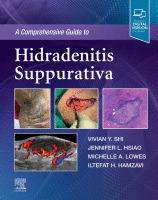Physical Address
304 North Cardinal St.
Dorchester Center, MA 02124

Abbreviations: hidradenitis suppurativa (HS) carbon dioxide (CO 2 ) neodymium-doped yttrium aluminum garnet (Nd:YAG) Hidradenitis Suppurativa Clinical Response (HiSCR) Dermatology Life Quality Index (DLQI) photodynamic therapy (PDT) methyl aminolevulinate (MAL) 5-aminolevulinic acid (ALA) methylene blue (MB) Introduction In additional to…

Introduction Every patient with hidradenitis suppurativa (HS) has a unique story to tell. All too often this story is a long one that includes numerous treatments, frustration, pain, and social embarrassment. By the time I see the patient, he or…

History of Surgery in Hidradenitis Suppurativa Hidradenitis suppurativa (HS) was first described by two surgeons in the 1800s, Velpeau and Verneuil. There was much debate surrounding whether HS was primarily a venereal disease, tumor, or abscess. In the 1890s, Barthelemy…

Introduction In the last few decades, surgical interventions for hidradenitis suppurativa (HS) have expanded well beyond traditional excisional approaches with the popularization of deroofing, the use of electrosurgical and laser-based excisions, and combined approaches that take both medical and surgical…

Introduction Hidradenitis suppurativa (HS) is characterized by relapsing, painful, suppurating, bleeding nodules, abscesses, and sinus tracts that primarily affect intertriginous skin. Aside from its debilitating physical manifestations, the disease carries a profound psychological burden and socioeconomic impact. These factors contribute…

Introduction to Wound Care in Hidradenitis Suppurativa The most important step in managing hidradenitis suppurativa (HS)-related wounds is to treat the underlying disease with appropriate medical and surgical approaches. Even so, proper local wound care is a key cornerstone of…

Introduction Pain is the most burdensome symptom of hidradenitis suppurativa (HS), accounting for greater impairment in HS-related quality of life (QoL) than even disease severity. Although it has received relatively less attention, pruritus is also common in HS and contributes…

Introduction Hidradenitis suppurativa (HS) is a chronic inflammatory disorder with a complex, multifactorial, and incompletely elucidated pathophysiology. Among relevant host factors are a number of important inflammatory pathways, including increased production of oxygen free radicals, enhanced expression of toll-like receptors…

Introduction The pathogenesis of hidradenitis suppurativa (HS) remains to be fully elucidated. Genetic susceptibility along with hormonal fluctuations and immune dysregulation are all thought to contribute to HS development. HS tends to occur in patients with comorbid conditions associated with…

Introduction Antibiotics alone, or in combination with other therapeutic strategies, have been empirically used in hidradenitis suppurativa (HS) with variable success, resulting only in temporary symptom relief in the disease process. Although very few randomized controlled studies have been performed…